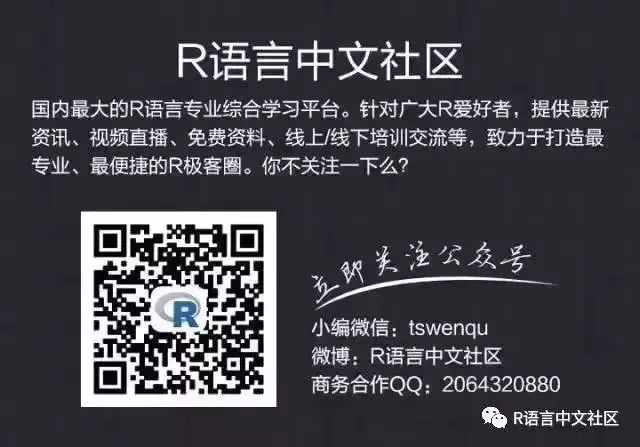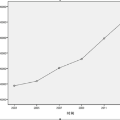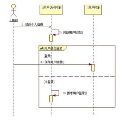时间序列深度学习:状态 LSTM 模型预测太阳黑子(下)
作者:徐瑞龙 整理分享量化投资与固定收益相关的文章
博客专栏:
https://www.cnblogs.com/xuruilong100
5.3 预测未来 10 年的数据
我们可以通过调整预测函数来使用完整的数据集预测未来 10 年的数据。新函数 predict_keras_lstm_future() 用来预测未来 120 步(或 10 年)的数据。
predict_keras_lstm_future <- function(data,
epochs = 300,
...) { lstm_prediction <- function(data, epochs,
...) { # 5.1.2 Data Setup (MODIFIED) df <- data # 5.1.3 Preprocessing rec_obj <- recipe(value ~ ., df) %>%
step_sqrt(value) %>%
step_center(value) %>%
step_scale(value) %>%
prep() df_processed_tbl <- bake(rec_obj, df) center_history <- rec_obj$steps[[2]]$means["value"] scale_history <- rec_obj$steps[[3]]$sds["value"]
# 5.1.4 LSTM Plan lag_setting <- 120 # = nrow(df_tst) batch_size <- 40 train_length <- 440 tsteps <- 1 epochs <- epochs
# 5.1.5 Train Setup (MODIFIED) lag_train_tbl <- df_processed_tbl %>% mutate( value_lag = lag(value, n = lag_setting)) %>% filter(!is.na(value_lag)) %>% tail(train_length) x_train_vec <- lag_train_tbl$value_lag x_train_arr <- array( data = x_train_vec, dim = c(length(x_train_vec), 1, 1)) y_train_vec <- lag_train_tbl$value y_train_arr <- array( data = y_train_vec, dim = c(length(y_train_vec), 1)) x_test_vec <- y_train_vec %>% tail(lag_setting) x_test_arr <- array( data = x_test_vec, dim = c(length(x_test_vec), 1, 1)) # 5.1.6 LSTM Model model <- keras_model_sequential() model %>% layer_lstm( units = 50, input_shape = c(tsteps, 1), batch_size = batch_size, return_sequences = TRUE, stateful = TRUE) %>% layer_lstm( units = 50, return_sequences = FALSE, stateful = TRUE) %>% layer_dense(units = 1) model %>% compile(loss = 'mae', optimizer = 'adam') # 5.1.7 Fitting LSTM for (i in 1:epochs) { model %>% fit(x = x_train_arr, y = y_train_arr, batch_size = batch_size, epochs = 1, verbose = 1, shuffle = FALSE) model %>% reset_states() cat("Epoch: ", i) } # 5.1.8 Predict and Return Tidy Data (MODIFIED) # Make Predictions pred_out <- model %>% predict(x_test_arr, batch_size = batch_size) %>% .[,1] # Make future index using tk_make_future_timeseries() idx <- data %>% tk_index() %>% tk_make_future_timeseries(n_future = lag_setting)
# Retransform values pred_tbl <- tibble( index = idx, value = (pred_out * scale_history + center_history)^2)
# Combine actual data with predictions tbl_1 <- df %>% add_column(key = "actual") tbl_3 <- pred_tbl %>% add_column(key = "predict")
# Create time_bind_rows() to solve dplyr issue time_bind_rows <- function(data_1, data_2, index) { index_expr <- enquo(index) bind_rows(data_1, data_2) %>% as_tbl_time(index = !! index_expr) } ret <- list(tbl_1, tbl_3) %>% reduce(time_bind_rows, index = index) %>% arrange(key, index) %>% mutate(key = as_factor(key)) return(ret) } safe_lstm <- possibly(lstm_prediction, otherwise = NA) safe_lstm(data, epochs, ...) }
下一步,在 sun_spots 数据集上运行 predict_keras_lstm_future() 函数。
future_sun_spots_tbl <- predict_keras_lstm_future(sun_spots, epochs = 300)
最后,我们使用 plot_prediction() 可视化预测结果,需要设置 id = NULL。我们使用 filter_time() 函数将数据集缩放到 1900 年之后。
future_sun_spots_tbl %>%
filter_time("1900" ~ "end") %>%
plot_prediction(
id = NULL, alpha = 0.4, size = 1.5) +
theme(legend.position = "bottom") +
ggtitle(
"Sunspots: Ten Year Forecast",
subtitle = "Forecast Horizon: 2013 - 2023")
结论
本文演示了使用 keras 包构建的状态 LSTM 模型的强大功能。令人惊讶的是,提供的唯一特征是滞后 120 阶的历史数据,深度学习方法依然识别出了数据中的趋势。回测模型的 RMSE 均值等于 34,RMSE 标准差等于 13。虽然本文未显示,但我们对比测试1了 ARIMA 模型和 prophet 模型(Facebook 开发的时间序列预测模型),LSTM 模型的表现优越:平均误差减少了 30% 以上,标准差减少了 40%。这显示了机器学习工具-应用适合性的好处。
除了使用的深度学习方法之外,文章还揭示了使用 ACF 图确定 LSTM 模型对于给定时间序列是否适用的方法。我们还揭示了时间序列模型的准确性应如何通过回测来进行基准测试,这种策略保持了时间序列的连续性,可用于时间序列数据的交叉验证。
公众号后台回复关键字即可学习
回复 R R语言快速入门及数据挖掘
回复 Kaggle案例 Kaggle十大案例精讲(连载中)
回复 文本挖掘 手把手教你做文本挖掘
回复 可视化 R语言可视化在商务场景中的应用
回复 大数据 大数据系列免费视频教程
回复 量化投资 张丹教你如何用R语言量化投资
回复 用户画像 京东大数据,揭秘用户画像
回复 数据挖掘 常用数据挖掘算法原理解释与应用
回复 机器学习 人工智能系列之机器学习与实践
回复 爬虫 R语言爬虫实战案例分享







